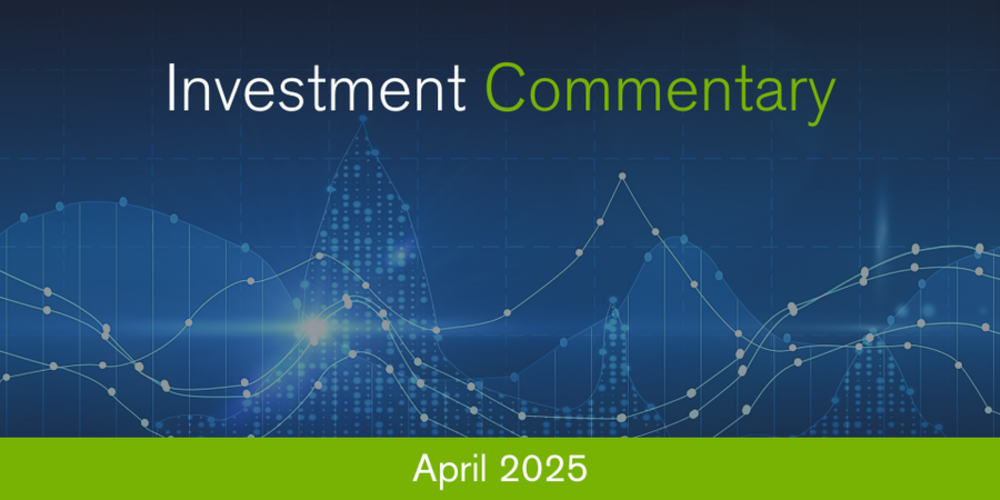Investment Commentary - April 2025

Disorderly, seismic, tumultuous, these are just some of the adjectives that could be used to describe April’s market conditions following the Trump administration’s announcement of broad-based reciprocal tariffs. So-called ‘Liberation Day’ on April 2nd marked the signing of an executive order by President Trump. This order outlined an extensive global tariff policy, designed to correct what the administration perceived to be unfair trading relationships with many of its trading partners. The initial response was one of dismay, with the measures seen as more punitive and wide-ranging than the consensus worst-case scenario. US recession odds rose significantly on the back of this. However, by the end of April, President Trump had rowed back on the worst of the tariff threats and market calm was restored (it is still somewhat early to assess any resultant damage to global trade flow).
Global equities sold off heavily on the announcement and the VIX volatility index spiked to 60 (it’s highest reading since the start of the pandemic). For US equities, the sell-off was the fifth-largest sell-off over a two-day period since the second World War, with a decline of around -12% over those two days. After the de-escalation, equity markets enjoyed a significant relief rally, with the S&P 500 rallying 9.5% in a single session on the news of a 90-day tariff pause. Remarkably, once the dust had settled, most equity markets were only marginally down on the month. The S&P fell -0.7%. The FTSE 100 and EuroStoxx 50 were similarly down, by -0.7% and -0.5% respectively. China, which had been much of the focus of the tariffs, fared the worst, with the Hang Seng falling -4% and mainland Chinese indices off by around -2%. China aside, the MSCI Emerging Markets Index managed a respectable gain of +1.3%.
The turmoil also affected the bond markets before they reverted to their traditional safe-haven role and ended the month in positive territory. US Treasuries finished the period with a return of +0.6%. Gilts and Eurozone sovereigns fared better, returning +1.9% and +2% respectively. Corporate bonds suffered initially on the tariff news, as historically tight credit spreads began to widen in the knowledge that operating margins would likely come under pressure should the tariffs come into force, however, they recovered towards the end of the month as fears subsided. US investment grade ending the period flat and UK and Eurozone investment grade bonds returned +1.3% and 1%, respectively.
Barring gold, commodities had very a tough time in April. The projected slowdown in global trade because of the tariffs put significant pressure on the oil price, with the price of oil falling back into the low sixties. As a result, Brent crude and WTI returned -15.5% and -18.6% respectively over the period. Industrial metals also came under pressure, with copper returning -9.5%. Gold, however, was one of the few assets to benefit from the market turmoil, extending its stellar year-to-date gains with a return of +5.3% for April, taking the year-to-date returned to over 25%.
For currencies, it was a very weak month for the US Dollar, with the Dollar index falling -4.6%, making it the worst-performing G10 currency for a second consecutive month. For the other major currencies, it was largely a case of a stronger Euro and Yen. Sterling was generally weaker (except against the Dollar).
All figures quoted are local currency returns (and USD returns for commodities).
- Date
- 20/05/2025





